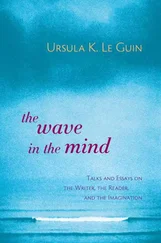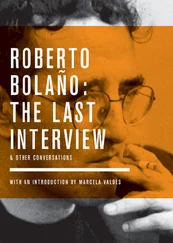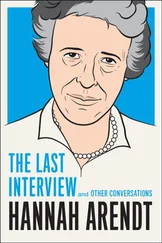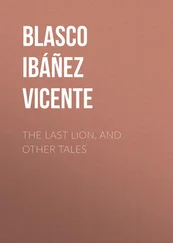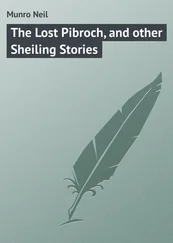LE GUIN:I was terrified he would just show up. I had young children.
STREITFELD:You wrote about Dick in a 1974 letter to James Tiptree, Jr., “We are both scared to death of each other. Each of us is the other’s Unconscious, I think.” And then you added: “Geniuses do tend to be overwhelming, I guess, don’t they?”
LE GUIN:What some consider a mystical breakthrough late in Phil’s life looks to me more like a breakdown. Still, this was a remarkable mind. But his works don’t wear as well as I hoped and thought they would.
STREITFELD:Oh no!
LE GUIN:I did an introduction to the Folio Society edition of The Man in the High Castle , and re-reading it I was struck by the clunkiness. Others that I liked a lot I now find hard going. I’m afraid to re-read Galactic Pot-Healer, my secret favorite. Clans of the Alphane Moon, which I was crazy about, now seems cruel. The way he handled women was pretty bad.
STREITFELD:There is a utility box on a street next to Berkeley High that devotes one side to you and another to Dick, the school’s two most famous graduates.
LE GUIN:I’ve never heard of that. This is a huge school. They must have famous graduates other than us.
[When I got home, I sent her pictures. The utility box was not well kept up, and there was graffiti on it. On the third side was playwright Thornton Wilder. On the fourth side was a relatively recent graduate named Ariel Schrag, a cartoonist. Le Guin wrote back: “Wow. I gotta monument. It’s hard to tell, but it looks like I gotta mustache, too. Fair enough. I never knew Thornton Wilder went to BHS! I’ve always liked his stuff. Live and learn.”]
STREITFELD:I live near Berkeley, and you seem to haunt the place. Your father was a professor at Cal. A big building on campus is named after him. The family ranch in Napa, which you’ve returned to every year, is not far away. Parnassus Press, the original publisher of A Wizard of Earthsea, was based in Berkeley.
LE GUIN:I grew up on a house on a hill in Berkeley, at 1325 Arch Street. It was then a lower-middle class neighborhood. Now it’s very expensive, near the Gourmet Ghetto and Chez Panisse. I wrote an essay about the house, “Living in a Work of Art,” about how it was designed by Bernard Maybeck in 1907 and was a wonderful if sometimes scary place for a child. The floors creaked long after you walked on them. The house was a complex space, even a moral space, and had an influence on me I can only begin to understand. My family owned it for fifty-four years, until my mother’s death in 1979.
I sort of do and don’t belong in the Bay Area. I grew up there but left at seventeen and never lived there full-time again. I just visited, and stayed there in summers with my family. I had friends and relatives all over the place for a while. But I was never ever part of the California literary scene—the Beats and so on. San Francisco has had quite the glory days but I’ve never felt so unwelcome in any bookstore as City Lights. Oh, they were so snotty.
STREITFELD:They were? They carry more of your books than anyone else in the Bay Area.
LE GUIN:This was twenty years ago, thirty years ago. They were very male-oriented. Come on. I’ve got nothing against City Lights. They’re great and I’m glad they’re there and I’m glad they’re keeping going, but it never was much of a pleasure to go into in the old days. It’s a kind of underground snobbishness. They make you feel like a middle-aged housewife, because they’re so liberated and San Francisco is male. Well, what do you do when you actually are a middle-aged housewife? The Beats weren’t good to women, with their addiction scene.
STREITFELD:I never think of you as contemporary with the Beats, but you were. Jack Kerouac was only seven years older than you, Allen Ginsberg barely three. You had the last laugh on the Beats. You’re still alive.
LE GUIN:Being a housewife and not being an addict prepares you for being eighty in ways that a life of wild living does not. The Beats died young, many of them. The great survivor is Gary Snyder. He was the one who didn’t dope.
STREITFELD:Someone needs to do a monograph on Parnassus Press, publisher of A Wizard of Earthsea and much more. Very little is known about them.
LE GUIN:They were called Parnassus because they started in the late 1950s on a street named Parnassus. It was just Herman Schein and his wife, Ruth Robbins. They published my mother’s book, Ishi: The Last of His Tribe, in 1964. That’s how they found out about me. Herman was cranky, difficult. He asked me if I would write a fantasy for teenagers. I said I could never do that. Then it was, “Oh wow, I got this idea.” Robbins, who did the illustrations, was a darling. She, and Herman, had no difficulty in understanding that the hero Ged is not a white man. Herman died rather young, and Ruth sold the press to Houghton Mifflin. They never got the credit they deserved as a children’s press. They did beautiful books.
STREITFELD: A Wizard of Earthsea seems steeped in the Bay Area—the hills, the rain, the fog, the sense of never being far from the ocean. There’s a line I love in “Living in a Work of Art” about “the extraordinary light of the Bay Area, which combines inland sunshine with sea-reflected radiance.” I always imagine Earthsea to be like that.
LE GUIN:Havnor, the capital of Earthsea, was modeled on San Francisco. I could see it from my bedroom in Berkeley, a long way away. The world was bigger then. This was before the Bay Bridge, before the Golden Gate. To get to San Francisco, you took a ferry. It was an expedition, not a commute.
STREITFELD:You once did a script of Earthsea, with the legendary English director Michael Powell. That was back in the early 1980s, I think.
LE GUIN:That script is kind of a miracle. He got in touch, said he liked the books. We put the first two books —Wizard and The Tombs of Atuan —together. It moves with the stately Powell pace. The story is very old fashioned, an English school story. You could have made a movie out of it then. I don’t think it would work now. It would be childish.
STREITFELD:There is a lot of debate about the right age for children to read Wizard .
LE GUIN:The Parnassus first edition had on it “11 up.” They took that off very soon, because it was just about that point that the publishers were inventing the “young adult.” YA became a recognized publishing genre and Herman Schein realized that the way to define this book is YA, not “11 up.” But I kind of like “11 up.” A lot of nine-year-olds read A Wizard of Earthsea. I don’t think I would have understood it at nine but kids are very sophisticated now. Adult relationships are being talked about in the book—that can be really boring to a kid. But I don’t know.
STREITFELD:There’s a new Earthsea omnibus of the first four books that was just published by Puffin in England. It has supplementary material in the back that seems geared to very young readers.
LE GUIN:Young or stupid. I had a discussion about this with my editor at Puffin. She said, “The schools want it.” If that’s true, English schools are not what they used to be. But you can’t argue with an editor that says schools want it. I hate all back matter—“Questions for your book group” and so on. I just won’t look at it.
Читать дальше


